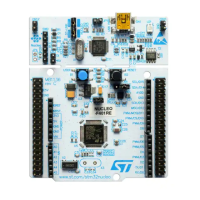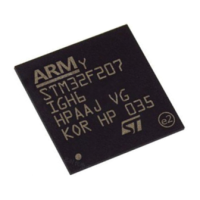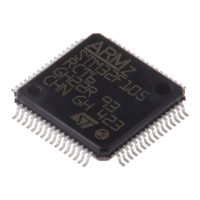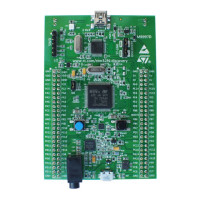PM0215 The STM32 Cortex-M0 processor
Doc ID 022979 Rev 1 21/91
Use memory barrier instructions in, for example:
● Vector table: If the program changes an entry in the vector table, and then enables the
corresponding exception, use a DMB instruction between the operations. This ensures
that if the exception is taken immediately after being enabled the processor uses the
new exception vector.
● Self-modifying code: If a program contains self-modifying code, use an ISB
instruction immediately after the code modification in the program. This ensures
subsequent instruction execution uses the updated program.
● Memory map switching: If the system contains a memory map switching mechanism,
use a DSB instruction after switching the memory map in the program. This ensures
subsequent instruction execution uses the updated memory map.
Memory accesses to Strongly-ordered memory, such as the system control block, do not
require the use of DMB instructions.
2.2.5 Memory endianness
The processor views memory as a linear collection of bytes numbered in ascending order
from zero. For example, bytes 0-3 hold the first stored word, and bytes 4-7 hold the second
stored word.
Little-endian format
In little-endian format, the processor stores the least significant byte (lsbyte) of a word at the
lowest-numbered byte, and the most significant byte (msbyte) at the highest-numbered byte.
See Figure 7 for an example.
Figure 7. Little-endian example
0HPRU\ 5HJLVWHU
$GGUHVV$
$
OVE\WH
PVE\WH
$
$
%%% %
%
%
%
%

